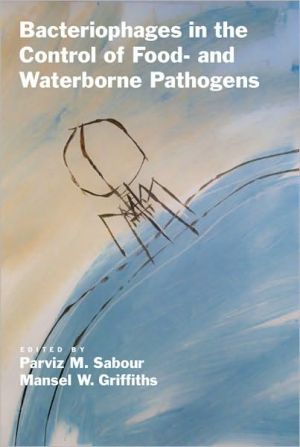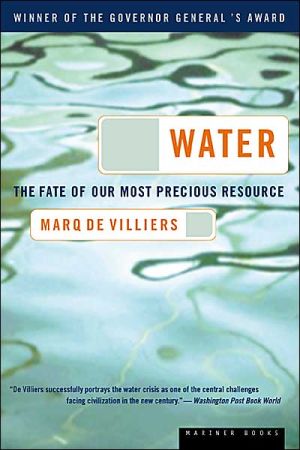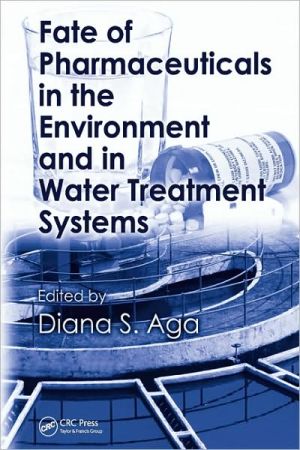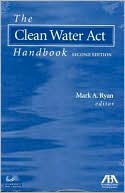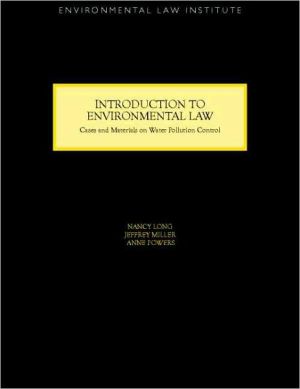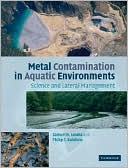Bacteriophages in the Detection and Control of Foodborne Pathogens
As food- and waterborne pathogens become increasingly resistant to antibiotics, researchers are turning to bacteriophages as an alternative to keep our food and water supplies safe. This timely book provides a unique comprehensive review of the literature on the application of bacteriophages as therapeutic and prophylactic agents in the food production and processing industries, including food animals, plants, and aquaculture.
Search in google:
As food- and waterborne pathogens become increasingly resistant to antibiotics, researchers are turning to bacteriophages as an alternative to keep our food and water supplies safe. This timely book provides a unique comprehensive review of the literature on the application of bacteriophages as therapeutic and prophylactic agents in the food production and processing industries, including food animals, plants, and aquaculture.
ContributorsForeword Elizabeth Kutter Kutter, ElizabethPrefaceAcknowledgments1 Implications of Antimicrobial Agents as Therapeutics and Growth Promoters in Food Animal Production Patrick Boerlin Boerlin, Patrick 12 Introduction to Bacteriophage Biology and Diversity Rob Lavigne Lavigne, Rob 113 Phage-Based Methods for the Detection of Bacterial Pathogens Mansel W. Griffiths Griffiths, Mansel W. 314 Application of Bacteriophages To Control Pathogens in Food Animal Production Lawrence D. Goodridge Goodridge, Lawrence D. 615 Bacteriophages for Control of Phytopathogens in Food Production Systems Susan M. Lehman Lehman, Susan M. 796 Potential Use of Bacteriophages as Indicators of Water Quality and Wastewater Treatment Processes Juan Jofre Jofre, Juan 1037 Application of Bacteriophages To Control Pathogenic and Spoilage Bacteria in Food Processing and Distribution Craig Billington Billington, Craig 1198 Bacteriophage Lytic Enzymes as Antimicrobials Daniel C. Nelson Nelson, Daniel C. 1379 Lysogenic Conversion in Bacteria of Importance to the Food Industry Gail E. Christie Christie, Gail E. 15710 Bacteriophages in Industrial Food Processing: Incidence and Control in Industrial Fermentation Sylvain Moineau Moineau, Sylvain 19911 Practical and Theoretical Considerations for the Use of Bacteriophages in Food Systems Jason J. Gill Gill, Jason J. 21712 Encapsulation and Controlled Release of Bacteriophages for Food Animal Production Parviz M. Sabour Sabour, Parviz M. 23713 Application of Bacteriophages for Control of Infectious Diseases in Aquaculture Toshihiro Nakai Nakai, Toshihiro 25714 Control of Bacterial Diarrhea with Phages: Coverage and Safety Issues in Bacteriophage Therapy Harald Brussow Brussow, Harald 27315 Industrial and Regulatory Issues in Bacteriophage Applications in Food Production and Processing Gary R. Pasternack Pasternack, Gary R. 297Index 327
\ Doody ReviewsReviewer: Rebecca T. Horvat, PhD, D (ABMM) (University of Kansas Medical Center) \ Description: This is a unique, comprehensive overview of how bacteriophages can be used to control the growth of deleterious bacteria. Chapters focus principally on the use of phages in agriculture and food safety as an alternative to chemicals, including antibiotics.\ Purpose: This book covers the basic scientific information available on phage biology including the life cycle in the bacterial hosts. It also details the processes needed to introduce phages into animal, plant, and environmental situations to prevent damaging bacterial growth. This should lead to further study in these areas and possibly provide an alternative to current methods used to prevent bacterial spoilage.\ Audience: The primary audience for this book includes agricultural and environmental scientists working on the detection and prevention of harmful bacteria in food and environment that could cause infections in humans. It is written at the level of laboratory scientists researching the potential of phage therapy. The authors work in laboratories worldwide and actively study phages as a means to detect and destroy harmful bacteria.\ Features: The book notes that bacteriophages are present in the environment at very high levels and naturally act to eliminate bacteria in a number of different environments such as water, soil, and plants. The use of these unique "bacterial viruses" as agents to control spoilage in food, illness from contaminated foods, and as bioindicators in water is an interesting concept with much potential for growth. The key to preventing foodborne and environmental illnesses is to eliminate bacteria responsible for the illness in humans. Thus, many of the studies determine the ability of phages to abolish bacteria such as Salmonella, Listeria and E.coli O157 in all stages of food production. Others consider using phages as an indicator of water quality in wastewater treatment plants. The book also notes the numerous obstacles and additional information needed before the use of phages in these settings could safely be used. These issues involve regulatory approval, investigation of raw material needed to grow the phages, and the stability of the preparations. \ Assessment: This is a well-written book with valuable information about a unique field of study that would be useful to pharmaceutical companies as well as agriculture and public health scientists.\ \ \ \ \ From The CriticsReviewer: Rebecca T. Horvat, PhD, D(ABMM)(University of Kansas Medical Center)\ Description: This is a unique, comprehensive overview of how bacteriophages can be used to control the growth of deleterious bacteria. Chapters focus principally on the use of phages in agriculture and food safety as an alternative to chemicals, including antibiotics.\ Purpose: This book covers the basic scientific information available on phage biology including the life cycle in the bacterial hosts. It also details the processes needed to introduce phages into animal, plant, and environmental situations to prevent damaging bacterial growth. This should lead to further study in these areas and possibly provide an alternative to current methods used to prevent bacterial spoilage.\ Audience: The primary audience for this book includes agricultural and environmental scientists working on the detection and prevention of harmful bacteria in food and environment that could cause infections in humans. It is written at the level of laboratory scientists researching the potential of phage therapy. The authors work in laboratories worldwide and actively study phages as a means to detect and destroy harmful bacteria.\ Features: The book notes that bacteriophages are present in the environment at very high levels and naturally act to eliminate bacteria in a number of different environments such as water, soil, and plants. The use of these unique "bacterial viruses" as agents to control spoilage in food, illness from contaminated foods, and as bioindicators in water is an interesting concept with much potential for growth. The key to preventing foodborne and environmental illnesses is to eliminate bacteria responsible for the illness in humans. Thus, many of the studies determine the ability of phages to abolish bacteria such as Salmonella, Listeria and E.coli O157 in all stages of food production. Others consider using phages as an indicator of water quality in wastewater treatment plants. The book also notes the numerous obstacles and additional information needed before the use of phages in these settings could safely be used. These issues involve regulatory approval, investigation of raw material needed to grow the phages, and the stability of the preparations. \ Assessment: This is a well-written book with valuable information about a unique field of study that would be useful to pharmaceutical companies as well as agriculture and public health scientists.\ \
